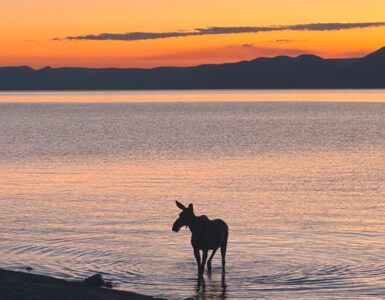ST. GEORGE — Zion National Park – Utah’s first and most-visited national park – is an area where three ecosystems collide, making the topography unlike any other.
“A place of peace and relaxation,” is what Mormon pioneers named the majestic 229-square mile area in the 1860s.
In 1909, President William Howard Taft declared the canyon a national monument. Ten years later the area expanded to become a national park. Today, the sheer 2,000 foot Navajo Cliffs offer a different scenic topography than other national park.
Alyssa Baltrus, chief of interpretation and visitor services said, “It makes you feel really small to see the cliffs. There’s no other park that puts you down at the bottom of the valley as well as Zion does.”
Along the valley bottom lies the Virgin River, continuously etching its way through the canyon.
“It’s something that definitely makes you think about time, and the amount of time it took to carve,” Baltrus said. “The Virgin River is constantly changing. It’s really, really unique.”
The river slowly, steadily changes the topography by bringing down more sediment through the slot canyons.
The park is open every day, 24 hours a day.
Its busy season begins in March and runs through November, with more than 2.8 million visitors last year.
Roughly 25 percent of Zion’s visitors are international tourists, about half are Utahns. Interestingly, only 10 percent actually see all of what Zion has to offer.
“Going to the main canyon where 90 percent of our visitors go is only one little section,” Baltrus said. “Definitely going through the tunnels, seeing the east side is a whole new world. Going to Kolob is another new world.”
Bryce Canyon: Small park, big reputation
It is an 83 mile drive from Zion National Park to another of Utah’s great national parks — Bryce Canyon. Tourists often compare it to the Grand Canyon, and in comparison, Bryce often wins.
“We remember being down to Grand Canyon as well,” said Willem Duyvesteyn, from Reno, Nev., “Bryce Canyon is actually nicer than the Grand Canyon. You can see everything here. At the Grand Canyon it’s very difficult to get a feel for it.”
The destructive forces of water, ice and gravity have slowly etched away at the soil and rock, shaping what is now the mythical-like fins and spires called hoodoos.
The formations inspire imagination and awe.
Saskin Duyvesteyn, a Salt Lake City resident, said, “From a distance, you can see from such a large scale something that can be created like that. You can see over that long distance and the lines are so perfect. Each of those formations is exactly the same size and shape.”
There are 69 miles of trails that wind like a maze through the hoodoos, giving visitors an up-close and personal experience. Heading up to the top of the plateau, on a clear day, views can be seen for more than 100 miles.
Kathleen Gonder, chief of interpretation at the park said, “Bryce Canyon is really a medium- to small-sized park with a big-sized reputation.”
Gonder said the word has spread. In March, Bryce Canyon hit an attendance record. Each year, 60 percent of the park’s visitors come from outside the United States.
“Right now, the predominate language you’re going to hear is Italian,” she said.
But often what you hear is the quiet of the wind as it whips through the forest above 8,000 feet.
High enough that as dusk settles, the night’s sky pops with a vastness of stars that city dwellers don’t often see.
“Here it feels you can almost reach out and touch them because they are so bright,” Gonder said.
Scenic Byway 12
While you’re in southern Utah, put Scenic Byway 12 on your to-do list. All you need is a camera, a car and a full tank of gas.
Driving the 122 mile stretch that runs from Bryce Canyon Junction to Torrey may make you feel, at times, like you’re the only one on the road.
Highway 12 passes through Red Canyon near Bryce Canyon National Park, through Grand Staircase-Escalante National Monument, over Boulder Mountain in the Dixie National Forest to its end near the entrance to Capitol Reef National Park.
Along the way you will pass:
- Blues Powell Point Overlook — a badland of gray-green shales deposited some 80 million years ago.
- Escalante Petrified State Forest with fossilized trees from millions of years ago
- Head of the Rocks Overlook with as-far-as-the-eye-can-see views across the Escalante Canyons.
- The Hogback — a roadway lined with steep cliffs on both sides
- Anasazi State Park — a village occupied, archeologists believe, sometime between 1050 and 1175 A.D.
- Homestead Overlook — at 9,400 foot elevation, visitors can see the five peaks of the Henry Mountains to the east and slopes of the Navajo Mountain.
In the last decade, Highway 12 has been dubbed an “all American Road,” meaning the sights along the highway do not exist anywhere else in the country.







Add comment